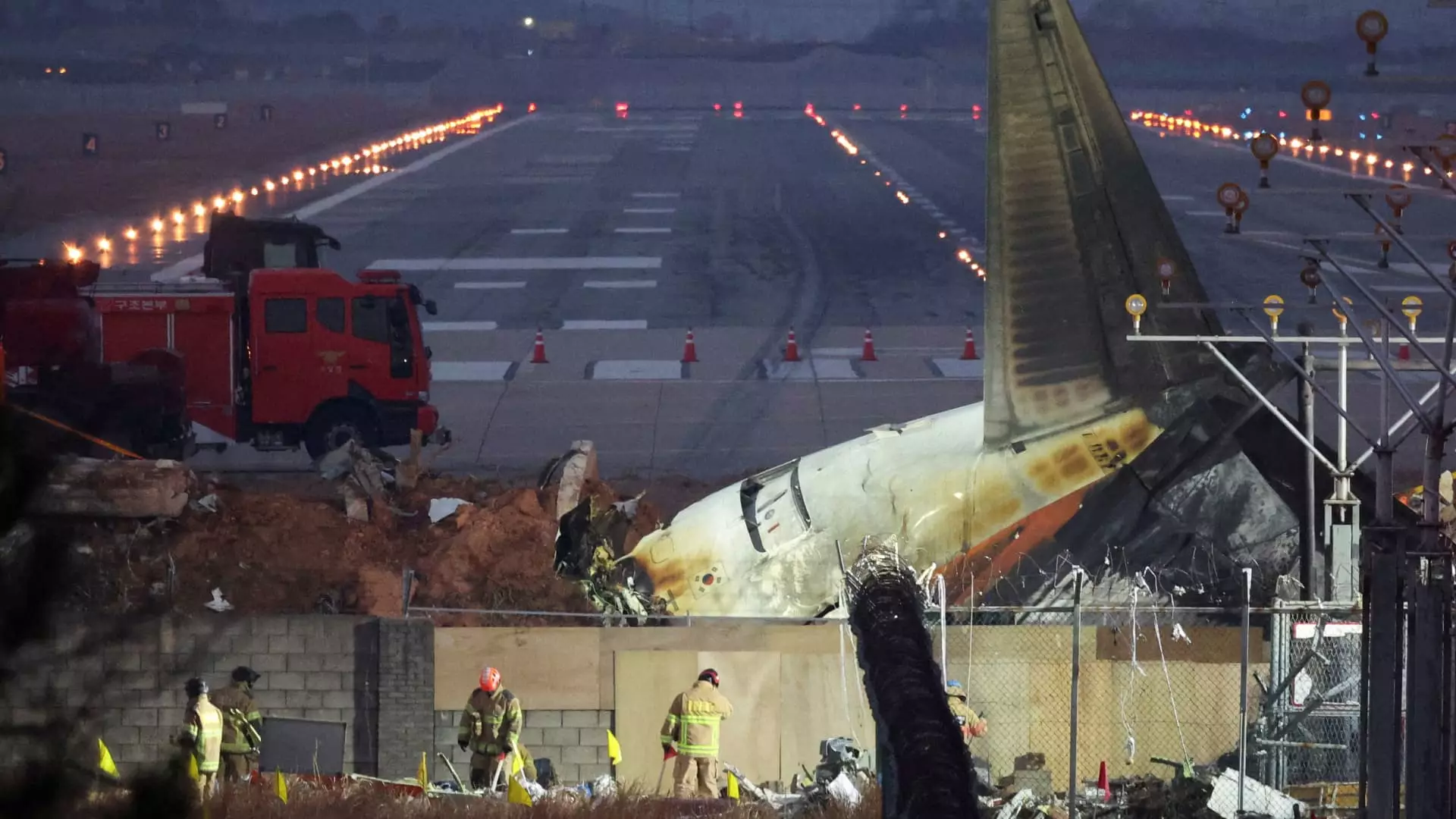On a fateful Sunday morning, Jeju Air Flight 7C2216 met a catastrophic end as it approached the runway at Muan International Airport. The Boeing 737-800, in a tragic series of events, belly-landed with its flaps and landing gear reportedly retracted, causing the aircraft to collide violently with a mound of dirt and a concrete wall at the runway’s threshold. This tragic incident claimed the lives of 179 out of the 181 passengers and crew on board, marking it as South Korea’s deadliest air disaster in many years.
This disaster has ignited a chorus of criticism regarding the airport’s design and the safety mechanisms in place. Aviation experts have raised alarms about the positioning of a concrete barrier near the runway. Inadequate design—specifically, the installation of a solid wall rather than a frangible barrier—has prompted discussions about whether improved safety measures could have mitigated the catastrophic outcome. Experts contend that barriers are crucial in aviation safety; nevertheless, they argue that these barriers should ideally be designed to yield and absorb impact, rather than causing further destruction during a mishap.
The subsequent investigation will likely delve into numerous factors, including the aircraft’s maintenance record and the pilots’ professional history. Initial reports suggest that a bird strike may have preceded the crash, potentially leading to an engine failure. Such occurrences underscore the myriad threats that aircraft face during critical landing phases, further complicated by the physical layout of the airports. However, experts warn that the investigation is just beginning and that premature conclusions could result in missed opportunities for learning and improvement.
In contrast to Muan International Airport’s static concrete wall, modern airport designs in places such as New York’s LaGuardia employ engineered materials to absorb the energy of overrunning aircraft. These engineered materials, known as EMAS, crumple upon impact, providing a vital cushion that can prevent aircraft from rolling into more perilous areas. This fundamental difference highlights a glaring oversight in the design and planning of Muan International Airport’s safety infrastructure.
While design flaws are critical components in analyzing this disaster, the human element remains paramount. Witnesses indicate that the aircraft displayed signs of slowing as it approached the runway, yet the collision with the wall likely resulted in devastating blunt force trauma for a significant number of passengers. This aspect shifts the blame from mere mechanical failures or miscalculations towards the integration of pilot decision-making and aircraft capability. As the investigation unfolds, it will be essential to explore how human factors intertwined with systemic design issues contributed to this tragedy.
The harrowing events surrounding Jeju Air Flight 7C2216 serve as a stark reminder of the importance of integrating robust safety designs into aviation infrastructure. As we await the findings from the ongoing investigation, one thing is clear: the aviation community must learn from these mistakes. Enhancing safety standards and re-evaluating existing designs at airports can spell the difference between life and death. This tragic incident must not merely be recorded in history; it should galvanize action to ensure that such unnecessary loss of life never recurs.

